The process of taking a startup from an entry level idea to a global business is much similar to running a long marathon. Everyone wants to be a part of it, everyone wants to have that glory, however, not everyone is able to complete it. The idea of running a startup might seem cool and promising, but in the more practical scenario, things don’t seem so favorable.
Being a striving entrepreneur myself I can completely relate to the above image and its depiction of a day in the life of an entrepreneur. Before you proceed further and I indulge you in more practical and market-related insights on the failure of startups and the key factors which can be avoided to prevent that, I strongly suggest that you go through these two pieces of content that I wrote a while back.
★ Different Stages in Startup Development
★ Challenges of the Next-Gen Startups
For any startup, these few things are the most crucial. Right from having a bright idea of changing the world to taking it to the doorstep of the people and having them embrace it, a startup doesn’t have it easy.
● Idea
● Vision
● Market
● Execution
Now when taken in that hierarchy, the idea comes first but is the least important and people are placed last but are most important and require ongoing development and work. Among each of them are further many more sub-elements for each which constitute together to form each of the core element. We will be covering an in-depth analysis of each element as we go and appreciate your feedback on the same.
 IDEA
IDEA
Nothing can stop an idea whose time has come.- Victor Hugo
The traditional and still much widely accepted notion is that ideas are the magic key of being that unicorn startup and that with just the right idea you can just wave a wand and have every success you ever dreamed of.
Truth be told you can’t be more wrong, ideas are in the cloud. Any person gets their ideas from the world and from their worldview, know some persons gets an idea and some person can’t it’s simply because of the difference in how they think and approach things.
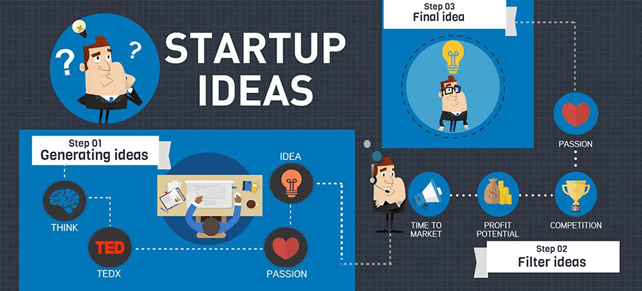
That being said there are more than 7 billion peoples in this world and as fast changing this world is it still isn’t fast enough to cope up with the mind’s capability to change. I personally remember having idea to catalogue best sites in every niche that a person searches for after coming across the internet in my teens as browsing and getting to the right content is a bitch especially now in the age of SEO but there was already existing sites to that and the saying that they own that idea because they came first is such bullshit.
Matter of the fact is that you can have an idea that can change the world, you can think of doing things that will solve every problem in the world but you don’t know that you can think different but you can’t entirely think different, not really. Sooner or later someone is gonna match up to your line of thought, partially if not entirely. As correctly depicted in movie Inception, an idea is something when once planted in mind is very hard to get rid of. Unless you decide to act on it and test it out in the real world.
VISION
An idea being unstoppable is not a hammer to nail down problems as much as it’s a key to opening a lock. An idea when thought upon promises great deeds, being in the hall of fame, is one of its own kind in history but you are not the only one to think that, many must have thought that and many more must have failed.
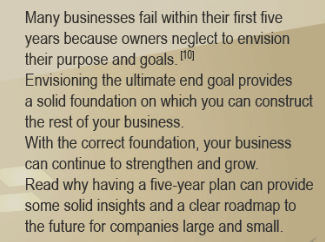
Success is not a one step journey rather it’s a ladder with steps made of failures. To visualize your idea in the reality of the world is the next core step to getting close to your dream.

Ideas are more about trying to solve problems, bringing the change, thinking out of the box while vision is more about destroying the box and creating a new one. Ideas show us what could be whereas vision determines what should be. Now the difference may seem brain-splitting but it’s rather simple, an idea comes from the world while a vision comes from a person.

While the idea represents the world of a person and thinking, vision represents the culture and values of that person. An idea is focused on changing the world whilst a vision focuses on creating a better world. A neat read on the topic and the shift of paradigm from ideas to vision can be read here
MARKET
Next thing which matters while realizing your vision is whether or not people are yet ready for it, whether there is a market big enough for you to cultivate your vision.
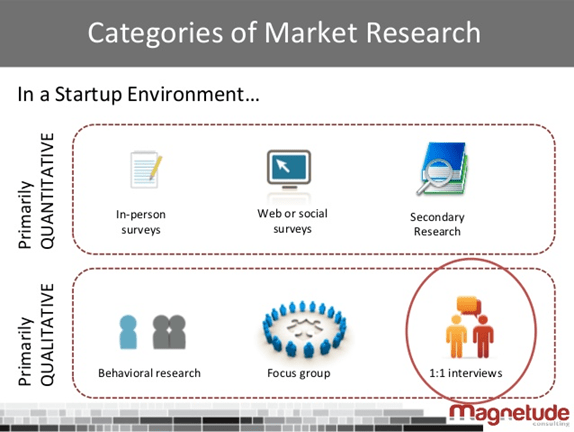
When globally reckoned brand Pepsodent tried to make its roots in southeast Asia, they ignored a small but rather significant cultural trend of that part. In that part of the world, people chew betel nuts to make their teeth blacks which is considered a status symbol. No wonder the promise of white teeth by the company failed on an epic scale. You can read about similar epic failures here.

42 percent of failed startups surveyed attributed their failure to bad market fit according to CBI insights report.
A few tips to test out the market:-
Before launching product :
➢ Blog or tweet about your activities and progress, get feedback both quantitative and qualitative.
➢ Engage in discussions on platforms such as Quora and ask questions openly.
➢ Create related surveys and get your target customers to know them better and their needs, also the demand for it. Give out incentives for beta testers and pre-orders.
➢ Use crowdfunding platforms like Kickstarter etc to get users, it also helps in correcting potential issues.
➢ Use social media and search engines by running test ads to reach people and building a dedicated email list as well as collecting data. You can use.
After product development :
➢ See how different versions of your product gets the response, do A/B testing. Try Optimizely for it.
➢ Get beta testers to do some real stuff, they are really valuable. Check out websites like Betalist, ErliBird and StartupList.
Market Analysis :
➢ Product Analysis is important to get insights into the target market.
➢ Marketing campaigns which get you most end user based traction are important as they help you understand the behavior of influencers who touch with them. Some social media tools such as Copromote and Bottlenose come in very handy for the same.
➢ Referral programs are a great way and much used as well to increase user base while keeping the existing ones. A great example of it is the referral program of Dropbox which gives both sides incentives.
You can read a much more comprehensive guide on hubstaff.
Everyone does everything in their potential not to fail and in this era of information and resources, it’s kinda baffling how can someone fail due to such a thing, it has many reasons most being as most entrepreneurs are young and passionate they often forget to stay in touch with the reality on the path of forging their dreams.

That or either they are often ahead of the present market and don’t have the necessary tech or the need for it in present time. Market and needs of people in it keeps changing so the best thing that an entrepreneur can do is to test out the market on a regular basis and get feedback.
Execution
Even if a startup has put itself through the above stages successfully and with good capability, they are just soft tests. Real one comes when the startup founders are ready to plunge in the real world. To make your product successful and get it to the final stage of customer acquisition and retention, any startup has to go through nerve wrecking process of development. It’s a very simple process but in the real world complexities, many factors come into play.
An Ounce of Action Is Worth a Ton of Theory
Founding a startup & Hiring a team
First and foremost thing that comes to any startup founder is the team he puts together to take the startup to the threshold of success. A successful startup founder firstly ensures that the field in which his startup is what he loves to do and if a time comes then rather than relying on his team or outsourcing he can lift things from the ground on his sole capability. Whether it’s Steve Jobs, Bill Gates, Elon Musk or any other well renowned successful entrepreneurs, they all did what they loved and that’s why they excelled in that.
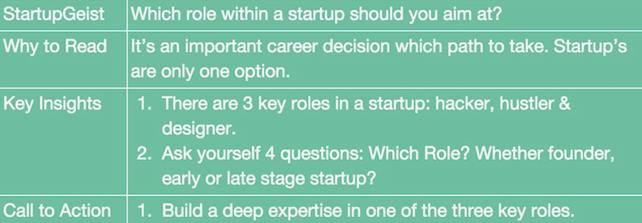
Afterwards comes the hiring of the core team, now as crucial as it is you have to remember few key points that it should be easier to manage, to keep together and should compliment each other’s skill sets.
If you can’t feed a team with two pizzas, it’s too large.
— Jeff Bezos
As good as the team is, in the end, it falls on startup founder and how good his leadership is to take that team through anything they encounter. Founders should also keep in mind that the core team will further create a team of their own at below levels so the hierarchy mustn’t be broken and leadership traits passed.
Leaders don’t create followers, they create more leaders.
Other than the traits you are already looking for and skills you need, a few other things you should also check :
● Whether have any previous startup of business experience
● Their aspirations as a member of core team and their past personal projects
● How good is their social media presence and if they have out of country networking and other experience
● How good are they in adapting, out of the box thinking, creativity and problem-solving.
● Coworking spaces are a great place to look for enthusiastic talent.
Raising funding for startup
Raising funds and managing cash expenditure are some things every founder should have a strategy on before getting into execution stage. Most founders in the love for their product ignore the reality of the world. No matter how good or potential your product is ignoring cash burn just because of future prospects of money is not wise. A good entrepreneur bootstraps and if and when needed invests only where he necessarily has to.

Then comes the funding part, most entrepreneurs don’t start until it’s too late and their product and startup hangs on the line of being jeopardized. The ideal time to start looking for preparing to raise capital funding is least six months before your cash is predicted to burn out at the current rate.
 Unrealistic/short-sighted Business model
Unrealistic/short-sighted Business model
Every startup comes on the verge of becoming a business and ultimately dealing with people and making its place in the market. Here a startup progresses by its ability to acquire customers. Just because their idea was breathtaking or the product is amazing or any number of reasons, it may work initially but in long term, this strategy doesn’t work. Two very important factors come into play here, cost of acquiring a customer (CAC) and lifetime value of that customer (LTV).
Most startups work on the acquisition of customers ignoring the cost and effort put in that and not paying attention to the return on investment (ROI). There are two very simple basics to keep in mind while developing a business model:
● Finding a way to acquire customers which can be scaled as per the need and demand.
● Monetizing the customers at an increased profit than cost of acquisition.
CAC/LTV RULE
There is nothing in this rule but the only factor that CAC should be less as compared to LTV.
For computation of CAC, you have to first calculate the entire cost of your sales and marketing operations inclusive of salaries, travel costs etc and then divide it by the total number of customers gained during that period of time.
Computing LTV is easy as for businesses with one-time fees, it’s pretty simple. For businesses with recurring subscription revenue model, you have to compute it by taking the monthly recurring revenue and dividing it by monthly churn rate.
Though we said to calculate LTV for a lifetime but to build a capital efficient business you should aim at recovering your CAC in a period of 12 months or less.
Other than above a few other factors also come into play such as competing in the market, pricing of your product, maintaining a balance between focus on your startup and networking to increase the worth of your network.
➢ Use the competition to push yourself but don’t become obsessive with them, in the end, you have to work on making yourself better with the one you were yesterday. In fact, as your business gains traction, competitors with complementary offerings could become lucrative partners.
➢ Decide the price of your product by taking into account a few factors such as your cost including rent, shipping, packaging, sales, and marketing etc. Also key in factors such as your revenue target, competitive prices and what is the potential of that market.
➢ Finally, in the ever continuing hustle, it’s important to maintain everything in a balance and as a startup founder, there are many things on the plate such as networking, product development, management and much more. The solution is pretty simple to focus on what really matters to get more and more customers and increasing number of sales.
You can also read these two articles to learn more about the art of execution in startup and maintaining a balance between things:
★ SUCCESS STORY OF VANDANA LUTHRA, VLCC FOUNDER
★ HOW NETWORKING SKILLS CAN HELP IN RAISING UP YOUR STARTUP?
Lastly, there is no continuous ensured success in the business world, once you have avoided all the reasons that could have possibly turned your startup into a failure and grabbed yourself a piece of the market then you have to see about expansion, business here see either rapid growth or stumble backward.
If you are not moving forward then you are going backward.
Once you have taken your business to a certain level, you will be seeing annual growth and profit. Now you must decide between either pushing yourself further to see where you can take this or leave it in hands of a person more suitable to manage it and focus on other ventures. The mistake here most founders make is that they get greedy. If you keep your goals like you had when you started and instead of getting greedy, keep a steady head then your startup will continue evolving itself and if not then just like that final snake at number 99 in snakes and ladders, your startup will stumble itself back to ashes real quick one moment short of glory.

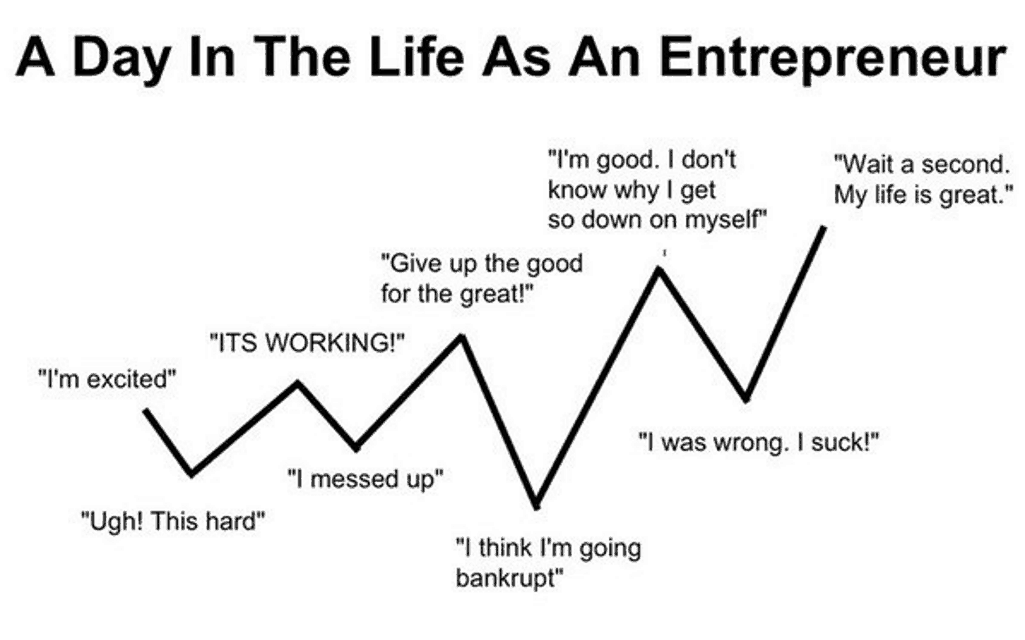
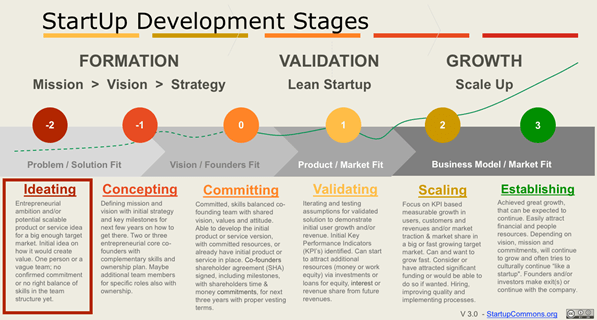 IDEA
IDEA Unrealistic/short-sighted Business model
Unrealistic/short-sighted Business model
